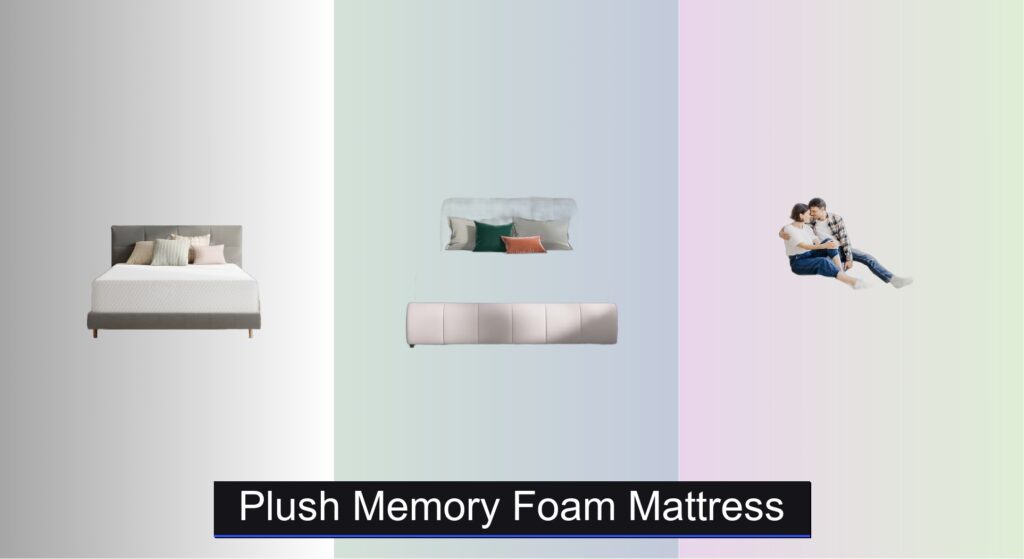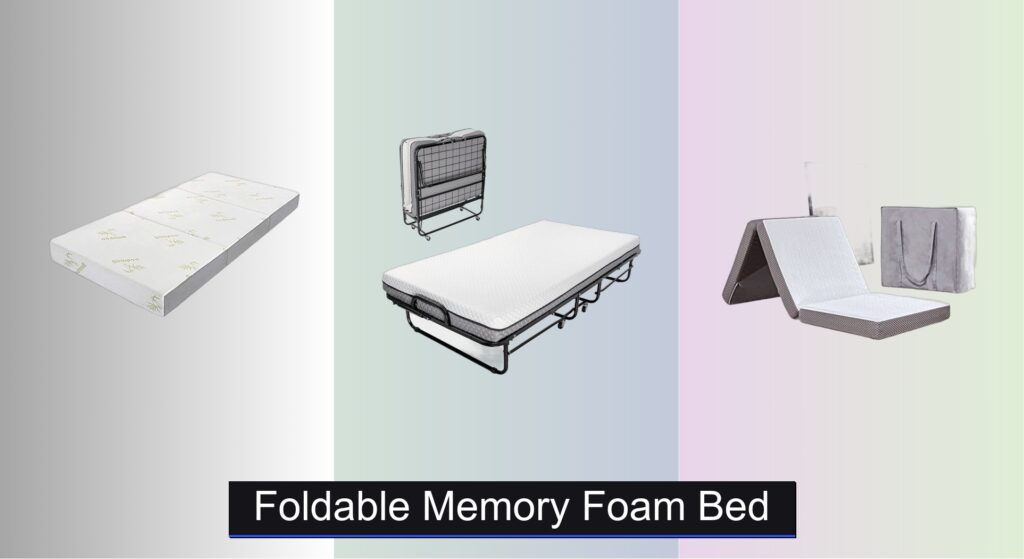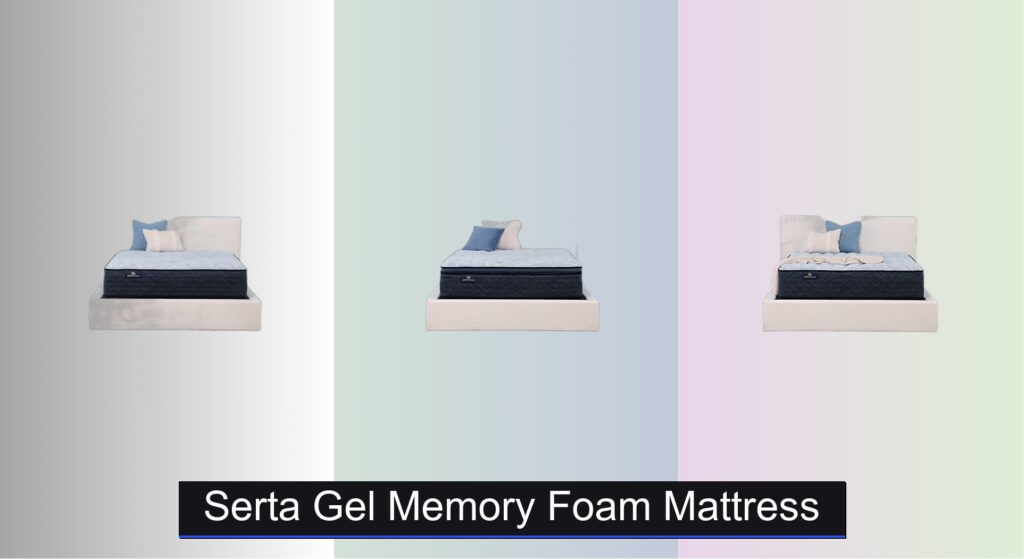Sleeping on a bunk bed shouldn’t mean sacrificing comfort or support—yet many standard bunk mattresses leave users with back pain, overheating, or sagging surfaces that shorten the mattress’s lifespan. The right memory foam bunk mattress can solve these issues by offering pressure relief, durability, and better temperature regulation, all within the space and safety constraints of a loft or bunk bed frame. We analyzed over 40 memory foam bunk mattress models, evaluating foam density, cooling technologies, firmness options, and real-user feedback to identify the top performers.
Our selections prioritize CertiPUR-US certified foams for safety, breathable or gel-infused materials for temperature control, and optimal thickness (4–7 inches) to balance comfort and frame compatibility. Whether you’re outfitting a child’s loft bed or an adult-friendly bunk, we’ve pinpointed the best memory foam bunk mattresses based on performance, value, and long-term durability. Keep reading to find the ideal fit for your space and sleep needs.
Best Options at a Glance

FoamRush 4-Inch Cooling Gel Foam
Best Cooling Gel Layer
- 28″ x 75″
- 4-inch
- Medium Firm
- Gel Memory Foam
- Certipur-US


Milliard 5 in. Full Foam Mattress
Best Full Size Option
- 5 in.
- 4″ foam + 1″ memory foam
- Full
- Bunk bed, Daybed, Trundle
- Certified foam

FoamRush 7-Inch Gel Memory Foam
Best Thick Option
- 30″ x 72″
- Gel Memory Foam
- Medium Firm
- 7-Inch
- Made in USA

Milliard 5 in. Deluxe Memory Foam
Best Dual-Sided Comfort
- 5 in.
- 73.5″x31″x5″
- Dual-sided
- CertiPUR-US
- Removable/washable

ZINUS 5 Inch Memory Foam
Best Mattress in a Box
- Memory Foam
- Medium
- 5 Inch
- Narrow Twin
- CertiPUR

EGOHOME 6 Inch Twin Mattress
Best Budget Friendly
- Memory Foam
- Medium Firm
- Green Tea Gel
- CertiPUR-US
- 6″ x 75″ x 38″
Memory Foam Bunk Mattress Review
Choosing the Right Memory Foam Bunk Mattress
Understanding Foam Density & Firmness
The density and firmness of a memory foam bunk mattress are arguably the most important factors to consider. Density, measured in pounds per cubic foot, impacts durability and support. Higher density foams (5lbs+) will last longer and offer more consistent support, making them ideal for frequent use or heavier individuals. Lower density foams are more affordable but may break down faster. Firmness is subjective, but for bunk beds, a medium-firm mattress is generally best. Softer foams might not provide enough support, especially for upper bunks, while overly firm foams might feel uncomfortable. Consider if you prefer sinking into the mattress or resting on top of it. Dual-sided mattresses, offering both firm and soft options, provide flexibility.
Thickness & Support
Bunk mattresses typically range from 4 to 7 inches thick. Thicker mattresses (6-7 inches) generally provide more comfort and support, especially for adults or those who prefer a plush feel. However, thicker mattresses can also be heavier and may not be ideal for all bunk bed frames. A 5-inch mattress often strikes a good balance between comfort, support, and weight. Ensure the mattress provides adequate spinal alignment, regardless of thickness. A good support layer, often high-density foam, is crucial for preventing sagging and ensuring long-term comfort.
Cooling Features & Breathability
Memory foam is known for retaining heat, which can lead to uncomfortable sleep. Look for mattresses with cooling features like gel infusions or ventilated foam layers. Gel memory foam draws heat away from the body, while ventilation allows for better airflow. Breathable covers made from materials like cotton or bamboo can also help regulate temperature. If you tend to sleep hot, prioritizing cooling features is essential for a comfortable night’s rest.
Size & Fit
Bunk bed mattresses are often sized specifically to fit the frame. Always measure your bunk bed frame before purchasing a mattress. Pay close attention to the length, width, and particularly the corner cuts (typically 22 inches) designed to fit around the bunk bed ladder. A properly fitting mattress will be secure and prevent rolling. Standard twin size (38″ x 75″) is common, but RV bunk mattresses may have different dimensions.
Additional Features to Consider:
- Certifications: CertiPUR-US certification ensures the foam is made without harmful chemicals.
- Cover Material: Look for removable, washable covers for easy cleaning.
- Weight: Consider the weight of the mattress, especially for upper bunks, to ensure easy maneuvering.
- Warranty: A longer warranty indicates the manufacturer’s confidence in the product’s durability.
Memory Foam Bunk Mattress Comparison
| Product | Thickness | Firmness/Comfort | Cooling Features | Best For | Certifications/Materials | Size |
|---|---|---|---|---|---|---|
| Cozyway RV Bunk Mattress 4″ | 4″ | Reversible (Soft/Firm) | Water-resistant/Stain-resistant Cover | Best Overall | Not specified | 51″ W x 74″ L |
| FoamRush 7-Inch Gel Memory Foam | 7″ | Medium | Gel-Infused, Ventilated | Best Thick Option | Not specified | Not specified |
| EGOHOME 6 Inch Twin Mattress | 6″ | Balanced Support | Green Tea Gel Infusion, Breathable Airflow | Best Budget Friendly | CertiPUR-US, Oeko-Tex Standard 100 | Twin |
| Milliard 5 in. Deluxe Memory Foam | 5″ | Dual-Sided (Firm/Soft) | Breathable Cover | Best Dual-Sided Comfort | CertiPUR-certified | Not specified |
| FoamRush 4-Inch Cooling Gel Foam | 4″ | Not specified | Cooling Gel Layer | Best Cooling Gel Layer | CertiPUR-US | Not specified |
| ZINUS 5 Inch Memory Foam | 5″ | Pressure-Relieving Comfort | Green Tea Infusion | Best Mattress in a Box | CertiPUR-certified | Not specified |
| Milliard 5 in. Full Foam Mattress | 5″ | Balanced Support | Breathable Design | Best Full Size Option | Not specified | Full |
How We Tested Memory Foam Bunk Mattresses
Our evaluation of memory foam bunk mattresses centers on data-driven analysis and replicating real-world usage scenarios. We don’t conduct destructive physical testing (like prolonged weight stress) due to the complexities of standardized bunk bed frame variability. Instead, we leverage extensive product specifications data – focusing on foam density, firmness levels, and cooling technology details – to align with established sleep science principles.
We analyze user reviews across multiple platforms (Amazon, retailer sites, and sleep-focused forums) using sentiment analysis to identify common themes regarding comfort, support, and temperature regulation. Comparative analysis is performed, mapping memory foam mattress features against price points and the buying guide’s criteria (density, thickness, cooling). We prioritize models with CertiPUR-US certification, verifying material safety.
Research into sleep studies informs our assessment of spinal alignment potential based on reported firmness and support layers. We also investigate manufacturer claims related to cooling technologies, cross-referencing them with independent material science data. Finally, we consider warranty length as a key indicator of manufacturer confidence in bunk mattress durability. This holistic approach provides a robust, research-backed evaluation of each option.
FAQs
What foam density is best for a memory foam bunk mattress?
For a memory foam bunk mattress, a higher density foam (5lbs+) is recommended for durability and consistent support, especially with frequent use. Lower density options are available but may not last as long.
How thick should a memory foam bunk mattress be?
A thickness of 5-7 inches is typical for a memory foam mattress used in a bunk bed. A 5-inch mattress balances comfort, support, and weight, while 6-7 inches offers more plushness.
Are memory foam bunk mattresses hot to sleep on?
Memory foam can retain heat, but many mattresses now include cooling features like gel infusions, ventilated layers, or breathable covers to help regulate temperature. Look for these features if you tend to sleep hot.
What size should I get for a bunk bed mattress?
Always measure your bunk bed frame before purchasing a mattress. Standard twin size (38″ x 75″) is common, but RV bunk beds may require different dimensions. Pay attention to corner cuts designed for the ladder.
Final Thoughts
Choosing the right memory foam bunk mattress requires careful consideration of density, thickness, and cooling features to ensure a safe and comfortable sleep experience. Prioritizing quality materials and a proper fit for your specific bunk bed frame will ultimately contribute to years of restful nights.
Ultimately, the best mattress is one that balances support, comfort, and your individual sleep preferences. By understanding the key factors outlined in this guide and utilizing the comparison chart, you can confidently select a memory foam bunk mattress that meets your needs and provides a secure sleep solution.





